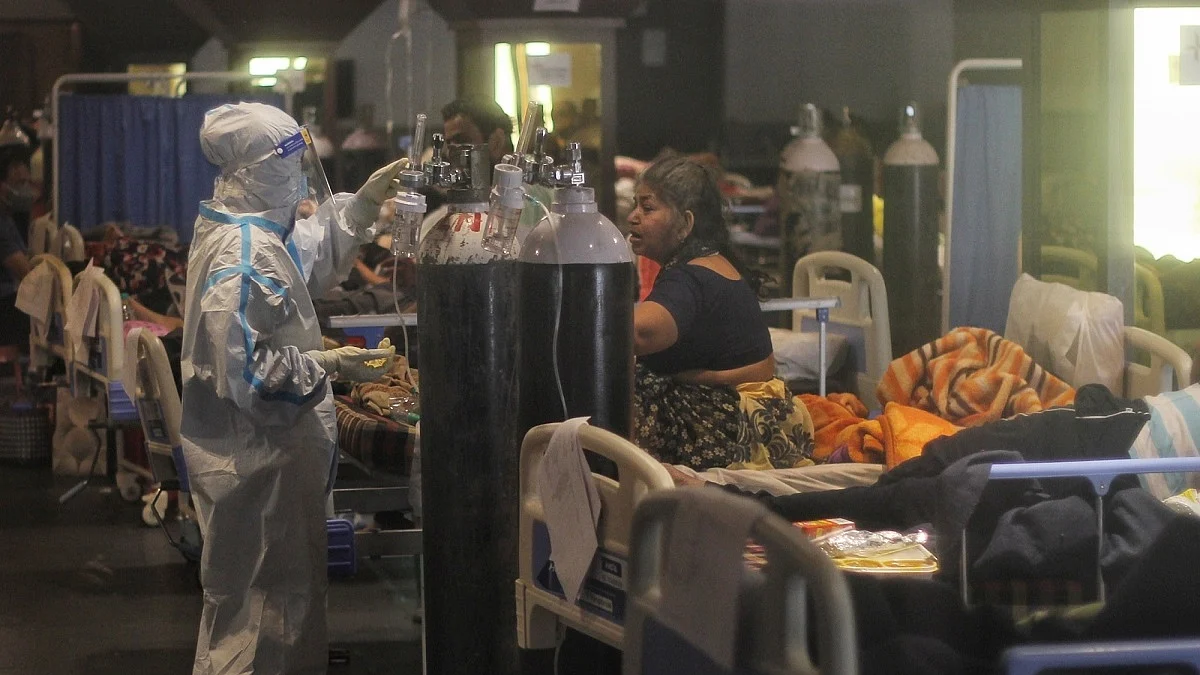Estimates about COVID third wave could go haywire if virus mutates, we must prepare for worst case scenario
All states, especially those with a higher estimated deficit, must use the time available to build up oxygen production capacity, intensive care units (ICU) and oxygen beds

Is a third wave of the coronavirus pandemic imminent? Will it be more severe than the second one? Can it be prevented? While it may be difficult to predict the exact timing and magnitude of the third wave, it is possible to estimate its impact, based on the experience of the first two waves. These estimates can then form the foundation for preparing resilient health infrastructure to tackle a possible third wave.
There are three possible scenarios, but in each, India needs to boost oxygen supplies and focus on vulnerable geographies.
The Coalition for Disaster Resilient Infrastructure, launched by Prime Minister Narendra Modi in 2019, has recently published a working paper on this issue. The paper’s estimates are based on the magnitude and timing of the second wave after scientific assessment, learnings from the experience of India and other countries, and advice from epidemiologists. It also recommends steps that the central and state governments must take to ensure adequate beds and oxygen for patients, if the next wave strikes.
The paper has given three scenarios: Business as usual (where vaccinations in states will continue at the same pace and the third wave will occur after six months); optimistic (where the vaccination speed will increase and the third wave will occur after seven months); and challenging (where the vaccination speed will reduce, and the third wave will begin much earlier).
However, in the case of a virus mutation, which nullifies the shield provided by antibodies formed in people due to prior infections and vaccines, estimates could go haywire.
Another significant projection is that Uttar Pradesh (UP), Bihar, West Bengal, Tamil Nadu, Maharashtra, Madhya Pradesh, and Andhra Pradesh will account for approximately two-thirds of the oxygen requirement due to the high number of vulnerable people in these seven states.
In the business-as-usual scenario, UP, Bihar, and West Bengal are expected to require the most oxygen at 3,076, 1,818, and 1,344 MT per day, respectively, out of the total 16,387 MT all-India requirement. Therefore, the plan to install Pressure Swing Adsorption (PSA) oxygen-generating plants across India must take this into account rather than distribute them evenly across all states.
Further, states that do not have industrial oxygen production facilities must ramp up their oxygen capacity.
The paper also suggests that only 60 per cent of industrial oxygen may be reserved for the significant source states as they go on to add medical oxygen capacity. The rest, 40 per cent oxygen, should be planned for allocation in deficit states. If this is not done, states, especially in the north and northeast India, may find it challenging to add adequate capacity.
All states, especially those with a higher estimated deficit, must use the time available to build up oxygen production capacity, intensive care units (ICU) and oxygen beds, and not be solely dependent on industrial oxygen.
All states must try to achieve self-sufficiency for the worst-case scenario. While the epidemiological models could not predict the second wave, they were almost accurate predicting the peak two to three weeks in advance. This indicates that once cases start rising in any state, they have two to three weeks to prepare for the peak.
Apart from creating additional oxygen sources, the emphasis must be on building supply chains for oxygen tankers, storage facilities, and cylinders. The hub-and-spoke model to receive oxygen in regional centres with proper storage facilities, along with sufficient distribution channels to deliver it from one location to another, need to be put in place now.
Lack of a trained workforce to handle oxygen wards and ICUs may become a constraint in the third wave. In addition, health care providers require additional support. A supplementary pool of medical and para-medical students, aapda mitras, National Cadet Corps cadets, and Home Guards with a science/biology background can be trained to work under medical guidance. States can also build temporary hospitals in government-owned land, stadiums, community halls, semi-constructed buildings, and parking lots.
Finally, an online health decision support system must be built. While the Centre and states have started many innovative digital interventions, a common national platform for citizens and decision-makers can provide tele-consultation, vaccination updates, and information about bed availability to citizens. It can also help decision-makers respond better by monitoring parameters for oxygen availability and requirement, movement of oxygen tankers, availability of workforce, and medicines. All existing systems and databases must be synergised in one place.
Whether the third wave occurs or not, this is an opportunity for India to prepare the health infrastructure system for an efficient and quick response to such mega and unprecedented health challenges.
(IPA Service)
Views are personal
Follow us on: Facebook, Twitter, Google News, Instagram
Join our official telegram channel (@nationalherald) and stay updated with the latest headlines
